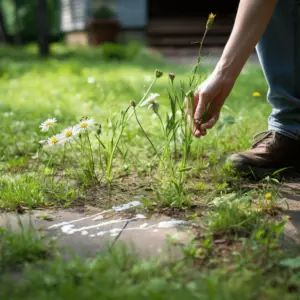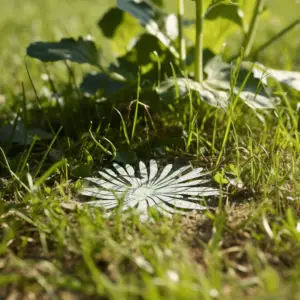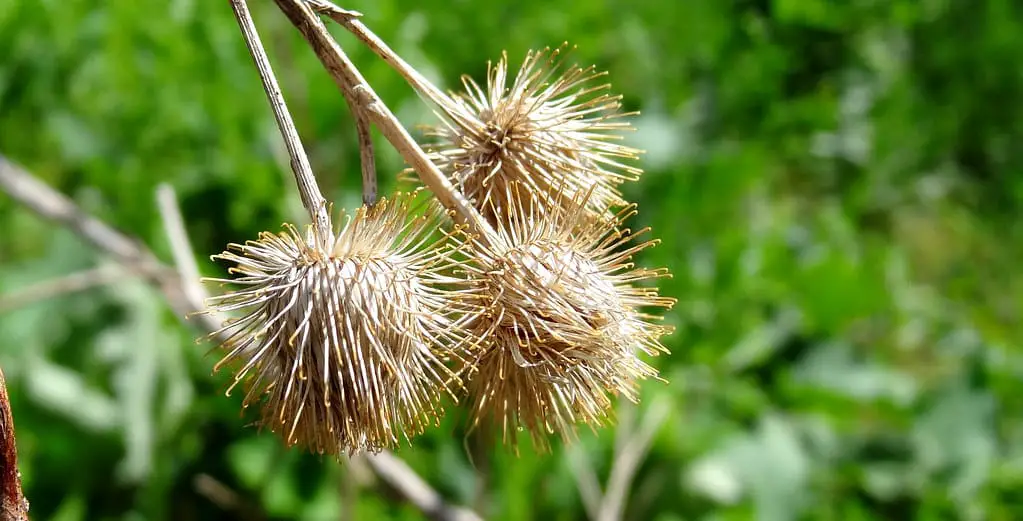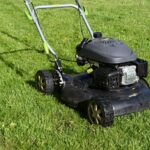Sticker Weeds, Perhaps the most annoying thing about burweed or pricking monsters, commonly known as sticker weeds, is that they can take over your lawn quickly, especially if they’re growing in dry and sandy soil.
In dry states like Arizona, Texas, and New Mexico, you’ve probably had to deal with these prickly stickers in your lawn from time to time.
With no proper control, sticker weeds tend to spread their seeds all over the area, making it uninviting. They thrive in the heat and are prominently found in Bermuda and St. Augustine lawns.
Sticker Weeds important to eliminate these weeds because the plants are invasive and can extend to places where they are hard to remove.
Some people try to control prickly grass by mowing it. The method may provide a better solution for keeping your yard clean, but on the flip side, you could be spreading their seeds all over the lawn. Moreover, cutting down the plants only gives them a temporary fix.
Table of Contents
How to get rid of sticker weeds permanently

What you need is a permanent solution that will keep the sticker grass at bay and not come back again. Here is how to remove and prevent sticker weeds from invading your lawn.
You will need to have:
- Water-soluble sticker herbicide containing 49% glyphosate
- Water-soluble sticker herbicide containing 38.7% pendimethalin
- Yard rake
- Pump sprayer
- Black plastic bag
Note: You don’t have to dilute glyphosate or pendimethalin if you’re using a premixed unconcentrated formula.
A pre-emergent herbicide can be an effective solution to help prevent sticker grass from growing. This is because the chemicals work by stopping the formulation of new root cells in infant weed plants.
Products such as the Scot Halts Crabgrass and Grassy Weed Preventer prevent the sticker grass from sprouting and sending new seeds, especially in spring.
Others such as the Quali-Pro MSM Turf Herbicide will attack the prickly grass after they have already matured.
That means the chemicals are simply sticker killers and will not ruin your grass- as opposed to general herbicides that kill every plant that come into contact with them.
Below is a step-by-step guideline on how to apply a pre-emergent herbicide in your lawn to eliminate sticker weed.
To mix the solution, start by pouring 0.4 pints or slightly over ¾ cup of water-soluble herbicide containing 38.7% pendimethalin and one gallon of water in a pump sprayer, if you’re controlling a modest growth of stickers in the grass.
You might want to use 10.08 ounces or about 1 ¼ cup of herbicide and a gallon of water if you’re dealing with a heavy infestation. The rate of application should be 4 lb per 1,000 square feet of the garden.
Apply a Pre-Emergent Herbicide
Next, put the granules into a spreader. Consider using the manufacturer’s preset on your spreader to begin applying the granules.
Sticker Weeds to start by doing a trim pass around your yard and finis the remaining areas in a grid pattern. This will help to make sure you get an effective application of the herbicide.
Although the granules only last for about three months, the pre-emergent herbicide will prevent the seeds from the sticker weeds from germinating.
You might, however, need to reapply for better results. Be sure to refer to the product label for specific application directions.
Note: Never mix, store or apply glyphosate in or from an unlined galvanized steel compression tank or container. Glyphosate reacts with galvanized steel to produce a highly combustible, highly toxic vapor.
Make sure you wear goggles, long sleeves, and waterproof chemical-proof gloves when dealing with glyphosate or other sticker herbicide products.
Avoid damping pendimethalin or glyphosate or in an outlet leading to a body of water such as a sink, storm drain, or commode. Also, don’t allow people or your pets to access the treated area until it completely dries.
It’s advised to spray glyphosate only on emerging sticker weeds seedlings or mature grass bur; otherwise, glyphosate will kill any type of plant that it comes into contact with.
Water Your Lawn Regularly
If your yard is thick and healthy, some sticker weeds will not get enough room to grow, as they do not spread on watered soil. The thickness of the yard will overwhelm the seeds of the weeds.
These unwanted plants will also be denied the critical sunlight warmth that prevents their seeds from germinating.
So, irrigate your lawn early in the morning because this is the time when the prickly grass is receptive to water and will consume the moisture provided.
Uprooting the Sticker Weeds by Hand

This is a practical method since it removes the roots of the plants, thereby preventing them from growing back again.
However, uprooting sticker weeds by hand is time-consuming and only applicable to smaller areas.
If you’re going to use this method, try to remove the entire taproot. If you’re unable to get rid of the weeds with stickers by hand, consider using garden tools such as a hoe.
Meanwhile, mowing can help, but you need to make sure the seeds of the plants are not dropping anywhere. You may want to mow with a bag so that the sticker plants can collect in the bag without spreading everywhere.
Keeping the lawn short and well-trimmed also destroys the plants and the seeds from maturing and germinating.
Conclusion
Getting rid of sticker weeds shouldn’t be difficult at all. While most homeowners prefer using pre-emergent and post-emergent herbicides to remove sticker weeds, you might want to consider keeping your lawn thick and short because it will smother the seeds of the burweed.
Alternatively, you can uproot the plants from the taproots to remove and prevent them from growing back again.


